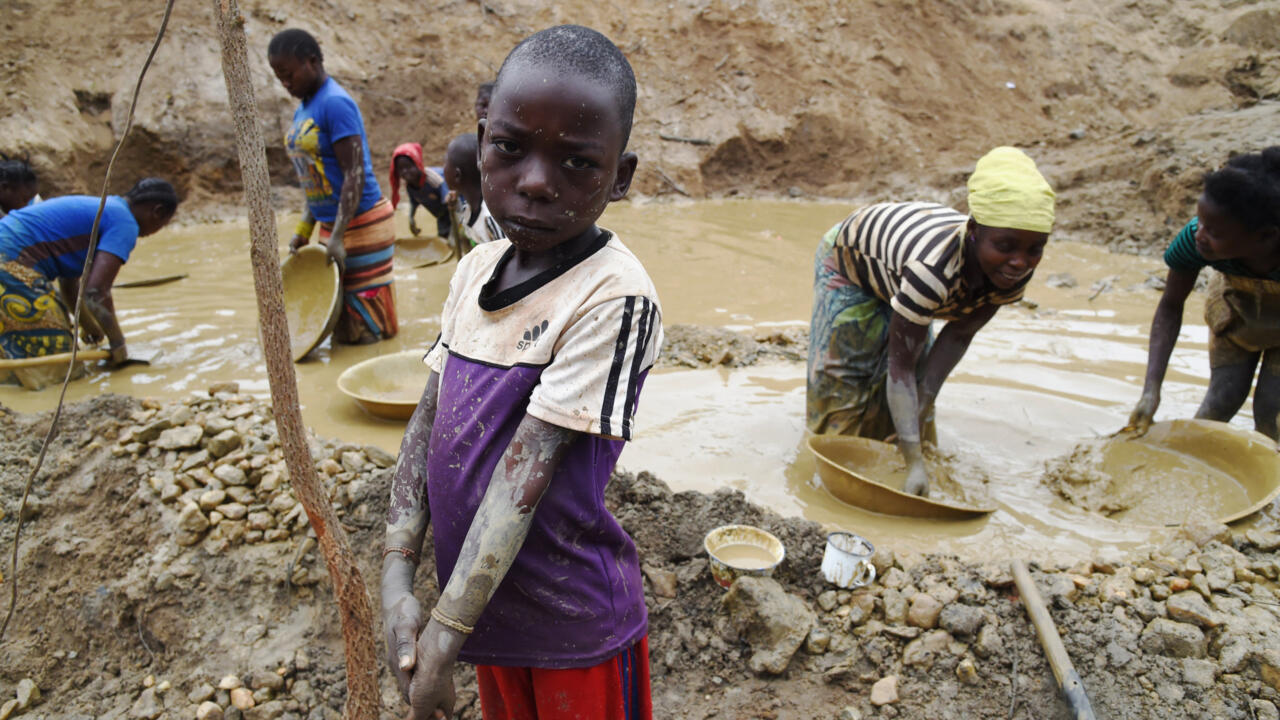Behind the numbers: How we measure global poverty – World Bank Blogs

Report on Global Poverty Measurement in Alignment with Sustainable Development Goals
According to data from the World Bank’s Poverty and Inequality Platform (PIP), an estimated 831 million people live in extreme poverty, subsisting on less than $3.00 per day. This data is fundamental for monitoring progress towards Sustainable Development Goal 1 (SDG 1): No Poverty. The generation of these global poverty estimates involves a standardized five-step process designed to ensure transparency, quality, and international comparability, which is crucial for the 2030 Agenda for Sustainable Development.
Methodology for Monitoring SDG 1 and SDG 10
The World Bank employs a comprehensive methodology to measure poverty and inequality, providing critical data for tracking SDG 1 (No Poverty) and SDG 10 (Reduced Inequalities). This process transforms raw data from individual households into globally comparable statistics.
-
Data Acquisition at the Household Level
The foundational data is collected through household surveys conducted by National Statistical Offices (NSOs). This primary data collection is a direct measure of living conditions.
- In a demonstration of SDG 17 (Partnerships for the Goals), World Bank economists often partner with NSOs in low- and middle-income countries to support the design and implementation of these surveys.
- The objective is to gather information on income, spending, and consumption from a representative sample of the population to create an accurate national snapshot.
-
Calculation of the Welfare Aggregate
A single metric of a household’s monetary well-being, known as the welfare aggregate, is calculated from the survey data. This metric is a proxy for economic status.
- This aggregate is typically based on consumption in low- and middle-income countries and on income in high-income countries.
- The calculation aims to be comprehensive, including all income sources or the full value of consumed goods, including self-produced food.
-
Standardization for Global Comparability
To allow for meaningful international comparisons essential for global SDG monitoring, welfare aggregates are converted into a common currency and standardized across time.
- Consumer Price Indices (CPIs) are used to adjust for inflation within a country over time.
- Purchasing Power Parities (PPPs) are used to adjust for differences in the cost of living between countries, ensuring that the poverty line represents the same purchasing power globally.
-
Deriving Poverty and Inequality Estimates
Once harmonized, the data is used to calculate key indicators related to the Sustainable Development Goals.
- The international poverty line, currently $3.00 per day, is applied to the data to determine the number of people living in extreme poverty, directly measuring progress on SDG Target 1.1.
- A wide range of other metrics are computed to provide a holistic view of well-being, including inequality measures for SDG 10.
- Analysis of multidimensional poverty is also conducted, capturing non-monetary deprivations that align with other SDGs, such as access to SDG 4 (Quality Education), SDG 6 (Clean Water), and SDG 7 (Affordable and Clean Energy).
-
Data Modeling to Ensure Comprehensive Coverage
To address years where countries do not conduct surveys, statistical models are used to fill data gaps, ensuring a complete and continuous global dataset for annual SDG reporting.
- Techniques such as nowcasting, extrapolation, and interpolation utilize macroeconomic data like GDP per capita growth to estimate poverty levels for years without survey data.
- For countries with no household survey data, a model predicts welfare aggregates based on factors associated with poverty, ensuring that every economy is included in the global assessment.
Conclusion: Data as a Foundation for Achieving the SDGs
This rigorous, multi-step process provides the foundational data for the Poverty and Inequality Platform (PIP). By making this data publicly available, the World Bank supports policymakers, researchers, and civil society in tracking progress and informing strategies to achieve the global goals, particularly the eradication of poverty in all its forms as mandated by SDG 1.
Analysis of Sustainable Development Goals in the Article
1. Which SDGs are addressed or connected to the issues highlighted in the article?
-
SDG 1: No Poverty
This is the primary SDG addressed in the article. The entire text is dedicated to explaining the methodology behind measuring global poverty. It explicitly mentions the World Bank’s estimate that “831 million people worldwide live in extreme poverty” and details the process of calculating poverty estimates to “track and inform progress in the global fight against poverty.”
-
SDG 10: Reduced Inequalities
The article directly connects the measurement of poverty to inequality. In Step 4, it states that the global team “calculates the poverty and inequality estimates from the household surveys.” This indicates that the data collection and analysis process is also used to understand and measure economic disparities within and among countries.
-
SDG 17: Partnerships for the Goals
The article highlights the collaborative nature of data collection and analysis. It mentions that National Statistical Offices (NSOs) “partner with World Bank economists in the design and execution of the surveys.” Furthermore, it acknowledges “financial support from the UK Government,” which exemplifies a partnership to fund research and data initiatives crucial for achieving the SDGs.
2. What specific targets under those SDGs can be identified based on the article’s content?
-
Target 1.1: Eradicate extreme poverty for all people everywhere.
The article is centered on this target. It discusses the measurement of extreme poverty using an “international poverty line—currently set at $3.00 per person per day” as a benchmark to determine how many people live below it. The entire five-step process is designed to produce the data needed to track progress towards this target.
-
Target 1.2: Reduce at least by half the proportion of people living in poverty in all its dimensions.
This target is addressed when the article mentions the computation of “multidimensional poverty, which goes beyond income and consumption to capture other important aspects of well-being, such as access to quality education, clean water, and electricity.” This shows an effort to measure poverty beyond just monetary terms.
-
Target 17.18: Enhance capacity-building support to developing countries to increase the availability of high-quality, timely and reliable data.
The article describes how the World Bank partners with NSOs in low- and middle-income countries for the “design and execution of the surveys.” This partnership is a form of capacity-building, aimed at improving the ability of countries to collect the high-quality data necessary for SDG monitoring.
-
Target 17.19: Build on existing initiatives to develop measurements of progress on sustainable development that complement gross domestic product.
The World Bank’s Poverty and Inequality Platform (PIP) is an initiative that develops measurements of progress. The article’s focus on “welfare aggregate,” “multidimensional poverty,” and “inequality” demonstrates a comprehensive approach to measuring well-being that goes beyond simple economic indicators like GDP.
3. Are there any indicators mentioned or implied in the article that can be used to measure progress towards the identified targets?
-
Indicator 1.1.1: Proportion of the population living below the international poverty line.
This indicator is the central focus of the article. The text details the entire methodology for calculating this proportion, from collecting household survey data on income and consumption to applying the “international poverty line” of $3.00 per day to determine the number of people in extreme poverty.
-
Indicator 1.2.2: Proportion of people living in poverty in all its dimensions.
This is directly implied by the article’s reference to computing “multidimensional poverty” measures. These measures capture non-monetary aspects of poverty, such as lack of access to “quality education, clean water, and electricity,” which are essential components of this indicator.
-
Indicator 17.18.1: Statistical capacity indicator for Sustainable Development Goal monitoring.
The article implies efforts to improve this indicator by describing how the World Bank partners with NSOs. This collaboration in designing and conducting household surveys directly contributes to strengthening the statistical capacity of developing countries.
-
Indicator 17.19.1: Dollar value of all resources made available to strengthen statistical capacity in developing countries.
A specific example of this indicator is provided in the acknowledgements: “The authors gratefully acknowledge financial support from the UK Government through the Data and Evidence for Tackling Extreme Poverty (DEEP) Research Program.” This is a direct mention of financial resources being used to support data and evidence gathering.
SDGs, Targets, and Indicators Summary
| SDGs | Targets | Indicators |
|---|---|---|
| SDG 1: No Poverty | 1.1: Eradicate extreme poverty for all people everywhere. | 1.1.1: Proportion of the population living below the international poverty line (mentioned as $3.00 per day). |
| SDG 1: No Poverty | 1.2: Reduce at least by half the proportion of people living in poverty in all its dimensions. | 1.2.2: Proportion of people living in poverty in all its dimensions (implied by the measurement of “multidimensional poverty”). |
| SDG 10: Reduced Inequalities | 10.2: Empower and promote the social, economic and political inclusion of all. | Implied by the calculation of “inequality estimates,” which is a prerequisite for monitoring inclusion. |
| SDG 17: Partnerships for the Goals | 17.18: Enhance capacity-building support to developing countries to increase the availability of high-quality, timely and reliable data. | 17.18.1: Statistical capacity indicator (implied by the partnership between the World Bank and National Statistical Offices). |
| SDG 17: Partnerships for the Goals | 17.19: Build on existing initiatives to develop measurements of progress on sustainable development. | 17.19.1: Dollar value of all resources made available to strengthen statistical capacity (mentioned as “financial support from the UK Government”). |
Source: blogs.worldbank.org

What is Your Reaction?
 Like
0
Like
0
 Dislike
0
Dislike
0
 Love
0
Love
0
 Funny
0
Funny
0
 Angry
0
Angry
0
 Sad
0
Sad
0
 Wow
0
Wow
0















































/environment-climate-change-and-health-(ech)/water-sanitation-hygiene-and-health-(wsh)/landfill-tuvalu-36092.tmb-1200v.jpg?sfvrsn=5c21fe40_1#)


.jpg.webp?itok=0ZsAnae9#)























